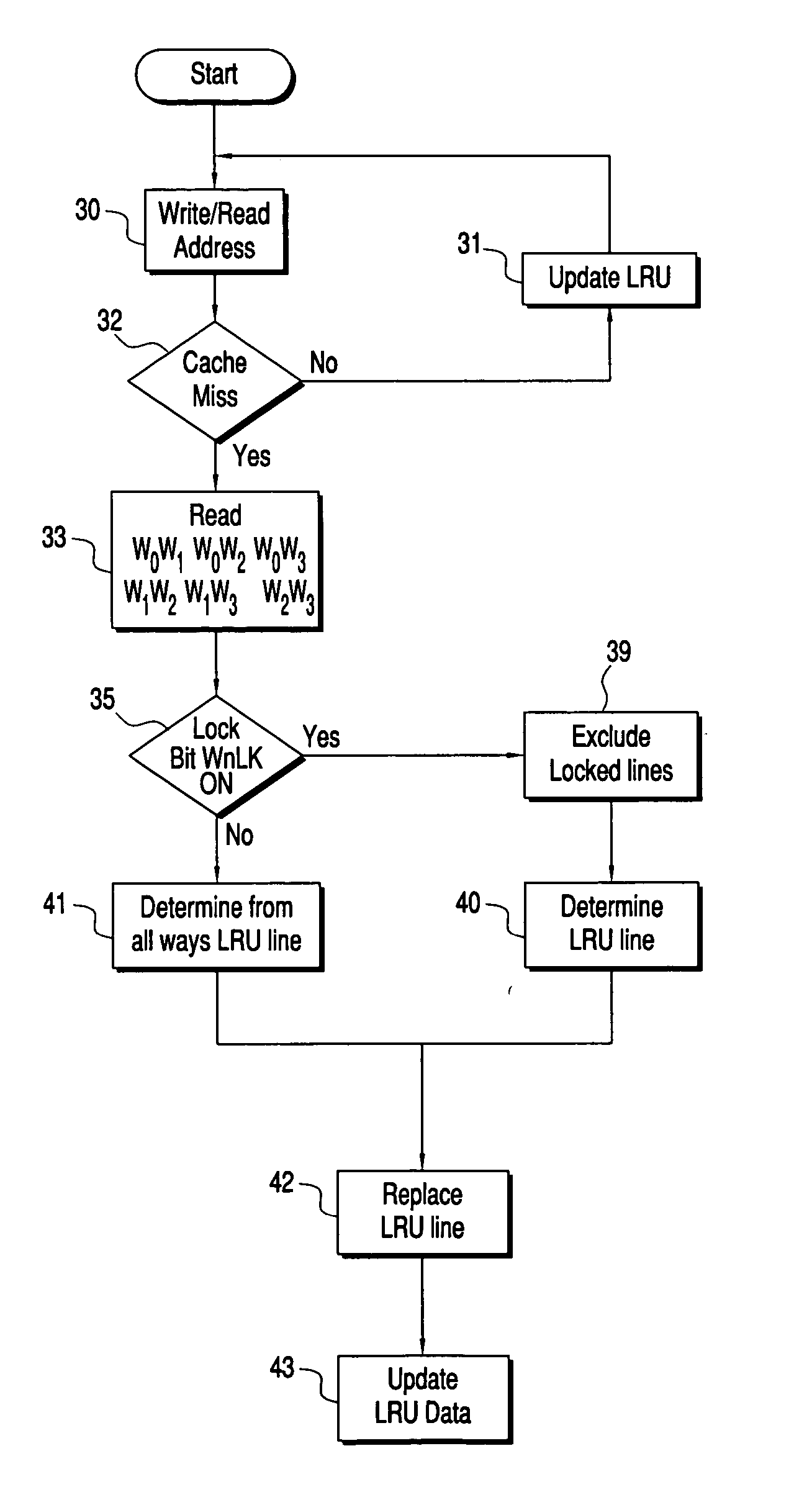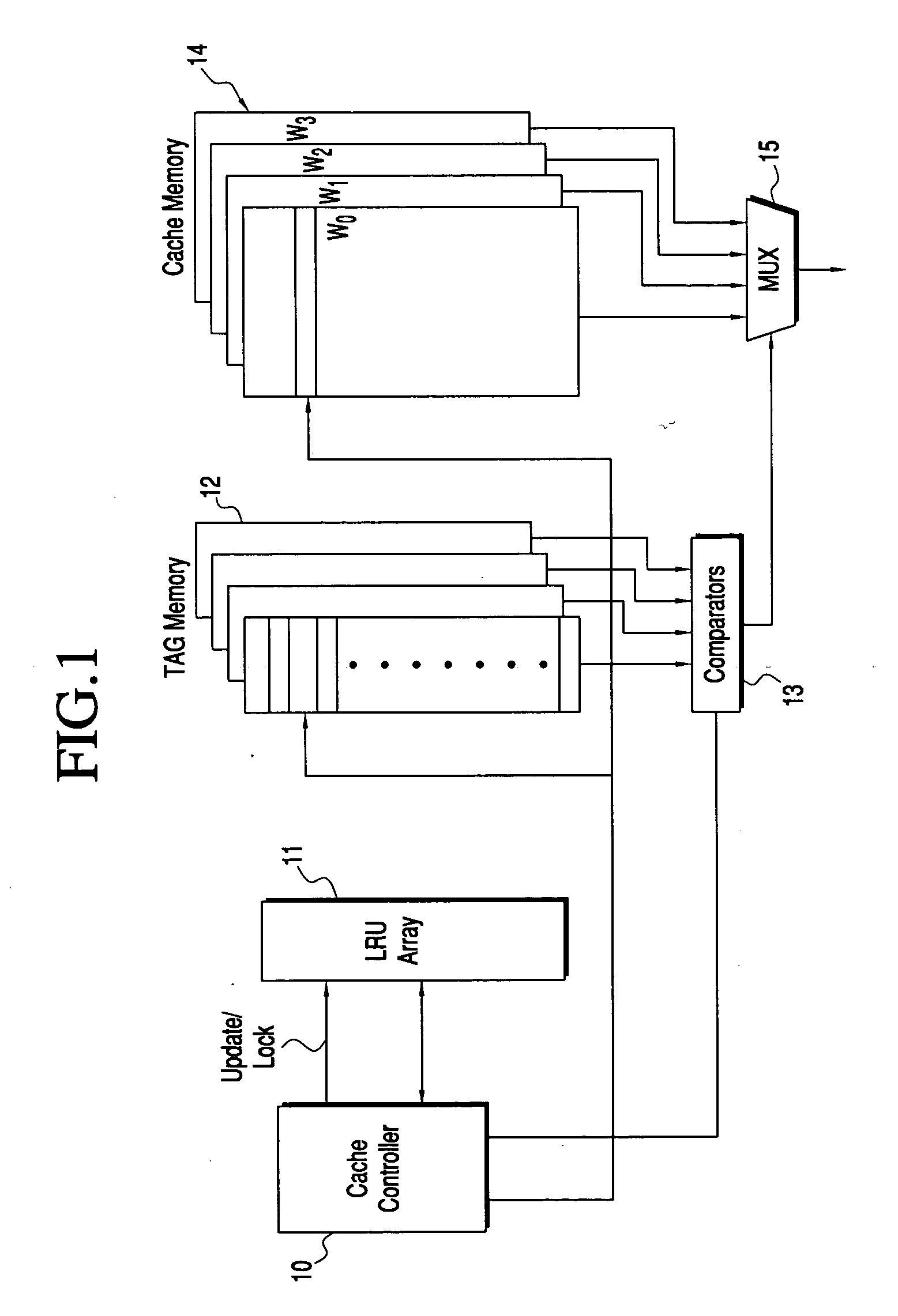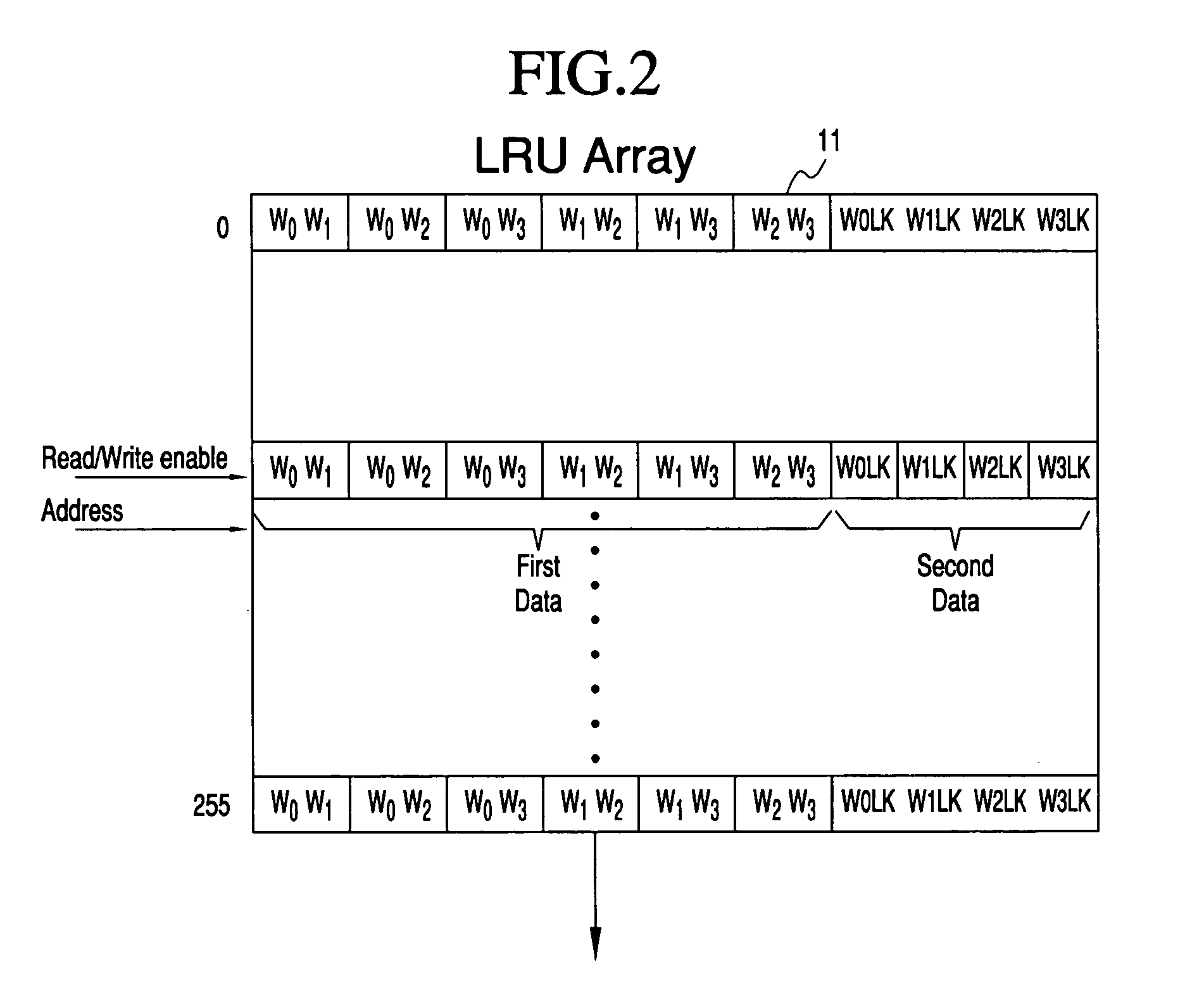Method for software controllable dynamically lockable cache line replacement system
a dynamic lock and cache technology, applied in computing, instruments, electric digital data processing, etc., can solve the problems of increasing the difference between instruction execution time and instruction latency, affecting the operation speed of the computer processor, and still existing a disparity between the operation frequency and the access time of the computer processor for data
- Summary
- Abstract
- Description
- Claims
- Application Information
AI Technical Summary
Benefits of technology
Problems solved by technology
Method used
Image
Examples
Embodiment Construction
[0012] Referring now to FIG. 1, there is shown a 4-way set-associative cache 14 under control of a cache controller 10. The set-associative cache includes ways W0, W1, W2 and W3, each set storing a line of data, such as instructions for execution by a processor. Each of the ways can include 256 lines of data, and each cache line produced from the set-associative cache 14 has a common address element so that four cache lines are addressed at once to produce a cache line of data from each of the ways W0, W1, W2 and W3. One of these lines of data is selected by multiplexer 15 based on the output from a tag memory array 12.
[0013] The lower order portion of the address provided by the processor addresses each of four tag arrays in the tag memory 12 as well as the ways of the cache memory. The higher order portion of the address is presented to a comparator 13, and when the output of a tag array agrees with the higher order portion of the address, then a cache selection signal is produce...
PUM
 Login to View More
Login to View More Abstract
Description
Claims
Application Information
 Login to View More
Login to View More - R&D
- Intellectual Property
- Life Sciences
- Materials
- Tech Scout
- Unparalleled Data Quality
- Higher Quality Content
- 60% Fewer Hallucinations
Browse by: Latest US Patents, China's latest patents, Technical Efficacy Thesaurus, Application Domain, Technology Topic, Popular Technical Reports.
© 2025 PatSnap. All rights reserved.Legal|Privacy policy|Modern Slavery Act Transparency Statement|Sitemap|About US| Contact US: help@patsnap.com



